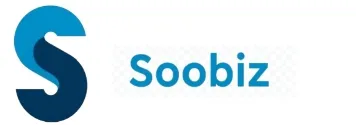Washington D.C. Student loan borrowers are facing continued frustration and uncertainty as the Department of Education, under the Trump administration, struggles to clear massive backlogs of income-driven repayment (IDR) plan requests and Public Service Loan Forgiveness (PSLF) Buyback applications. Recent court filings reveal painfully slow progress, and new policy changes threaten to exacerbate the situation, potentially adding millions more applications to an already overwhelmed system.
The ongoing legal battle between the American Federation of Teachers (AFT) and the Department of Education has brought these issues to light. The AFT’s lawsuit was triggered earlier this spring when the Trump administration halted IDR application processing, citing the need to update systems in response to a separate legal challenge concerning the SAVE plan. The AFT argued this shutdown was unlawful and hindered borrowers from pursuing PSLF, a critical program for public servants. While processing has since resumed, the temporary pause significantly worsened an already existing backlog.
Adding to the crisis, the relatively new PSLF Buyback program has seen a surge in requests. This program allows borrowers to make a lump-sum payment to count prior periods of non-qualifying deferment or forbearance toward loan forgiveness. Many PSLF borrowers, stuck in SAVE plan forbearance and nearing forgiveness, turned to PSLF Buyback when they couldn’t quickly change their repayment plans. This surge, combined with mass staff layoffs at the Department of Education, has led to a substantial backlog in PSLF Buyback applications.
Slow Progress on IDR Applications
The Department of Education’s latest status report, provided as part of a temporary agreement with the AFT, paints a grim picture of IDR application processing. While the backlog has seen a slight reduction from nearly two million requests through April 30, the overall progress is minimal.
As of the end of May, the department had processed 285,694 IDR applications, with a staggering 1,582,641 still in the queue. The situation barely improved by June 30, with only an additional 186,731 applications processed. This indicates a significantly slower processing rate in June compared to May. The total number of IDR applications remaining in the backlog stood at 1,511,504 largely unchanged from the previous month’s filing. At this rate, with a net backlog reduction of roughly 70,000 applications per month, it could take nearly two years for the department to clear the existing backlog.
The Department of Education maintains that it is making progress and attributes the large number of pending requests to a “processing pause put in place by the Biden Administration.” In a recent statement, the department claimed, “The Department continues to make progress on the backlog of submitted IDR applications because of a processing pause put in place by the Biden Administration… Borrowers switching from the SAVE Plan to another IDR plan can expect quick and timely processing.” This statement, however, seems to contradict the slow pace of processing detailed in their own filings.
PSLF Buyback Backlog Continues to Grow
Equally concerning are the updates regarding the PSLF Buyback backlog, which continues to worsen. In May, the backlog stood at over 49,000 requests. By the following month, it had grown to more than 58,000, despite several thousand requests being processed. The most recent filing indicates that as of June 30, the backlog has reached 65,448, even with another 2,224 applications processed. This means the PSLF Buyback backlog has grown by approximately one-third over the last three months, despite the department’s consistent processing efforts.
Backlogs May Worsen Dramatically
The current struggles are poised to escalate significantly due to recent policy and legislative developments. The Trump administration recently announced that, effective August 1, interest will resume on federal student loans subject to the SAVE plan forbearance. This decision, the administration claims, is necessary to comply with a new court order in the ongoing lawsuit over the SAVE program. However, student loan borrower advocacy groups argue that nothing in the latest order mandates the resumption of interest charges.
As a direct consequence of this decision, the Department of Education is now actively urging over 7.7 million borrowers to switch to a different income-driven repayment plan. Furthermore, the future of the PAYE and ICR plans is uncertain, particularly after President Trump’s “Big, Beautiful Bill” authorized their eventual repeal, along with the SAVE plan. The department has suggested that these borrowers also consider changing their repayment plan, with the Income-Based Repayment (IBR) plan being the only alternative option. This could potentially add millions of additional applications to the already massive backlog in the coming weeks and months, pushing the system to its breaking point.
Secretary McMahon, in a statement announcing the resumption of interest accrual, urged borrowers to act quickly: “The Department urges all borrowers in the SAVE Plan to quickly transition to a legally compliant repayment plan – such as the Income-Based Repayment Plan. Borrowers in SAVE cannot access important loan benefits and cannot make progress toward loan discharge programs authorized by Congress.”
What Student Loan Borrowers Can Do
Given the current challenges, student loan borrowers need to be proactive. Some student loan servicers are recommending that borrowers who applied for an IDR plan in April of this year or earlier resubmit their application online.
A crucial tool for expediting the process is the newly restored IRS data retrieval tool. This feature allows borrowers to provide consent for the Department of Education to directly obtain their federal tax information from the IRS, automatically verifying their income. The department actively encourages the use of this feature, stating: “Applying for an IDR Plan is quick and easy if borrowers provide consent for the Department to obtain their federal tax information directly from the Internal Revenue Service… This allows the Department to process borrowers’ IDR applications faster and eliminates the need for borrowers to manually upload their income information.”
Borrowers who provide this consent will also be eligible for automatic annual income recertification for existing IDR plans, simplifying future management of their repayment plan.
The coming months will be critical for millions of student loan borrowers. With existing backlogs showing little improvement and new policy changes poised to flood the system with additional applications, timely processing of IDR and PSLF Buyback requests remains a significant concern. Borrowers should consider utilizing all available tools to ensure their applications are processed as efficiently as possible.
Do you have questions about which repayment plan might be best for your situation, or need help navigating the application process?





